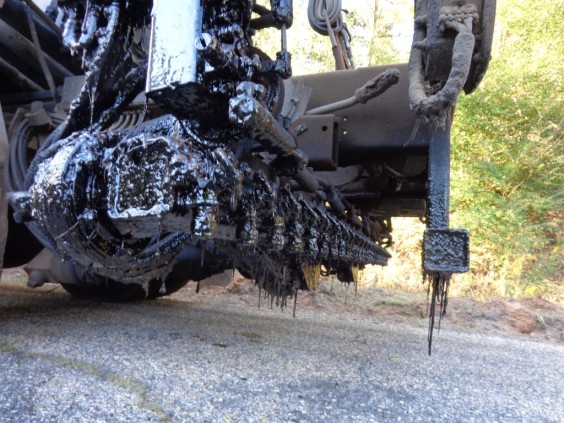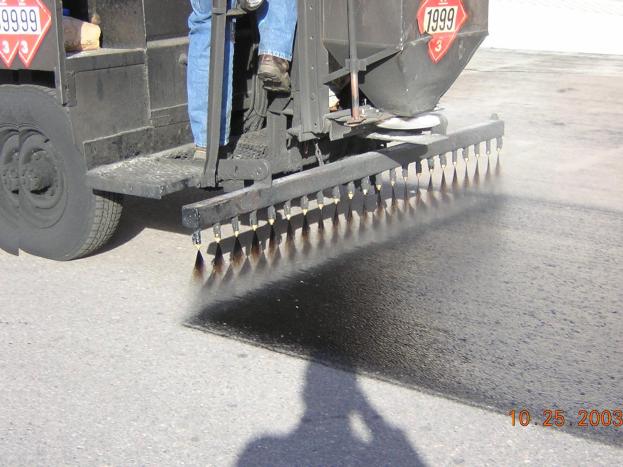Prime coat refers to asphalt cement binder product that is applied to the a granular or concrete base surface prior to the application of a lift of asphalt. There are several purposes for the use of prime coat. The first is to provide adhesion and bonding of the base course and the first lift of asphalt. The second is to plug capillary voids in the base course to prevent migration of moisture upwards or downwards. The third is to toughen and harden the base surface to make for a work platform for construction equipment. The final purpose is to coat and bond loose particles on the surface of the base. However, within the last 5-10 years, there has been an emergence of engineers who have eliminated the use of prime coat saying it does not serve it’s purpose nearly as effectively as once thought, particularly on asphalt thicknesses 4″ or more. It has recently been proven false that lack of prime coat leads to pavement failures. Prime coat is typically applied with an Asphalt ‘distributer’ trailer or more commonly trucks. The distributer truck is equipped with an insulated tank with a heating system, a control system, and a spray bar. The spray bar is in the rear of the machine and has several nozzles pointing downward towards the pavement. The spray bar often requires self heating or heating with a propane torch to open up the nozzles and to produce good flow.

Prime coat application has really become an exact science that requires sophisticated elements working in equilibrium for proper application and coating. Most distribution trucks are equipped with hand sprayers to get to hard to reach locations. It is important to have the correct nozzle size installed to correspond with the correct grade and type of asphalt product. The height of the spray bar must be just right so that gravity and wind distortion does not affect the application rate. A common application rate for Prime Coat on a compacted aggregate base surface is 0.4 Gallons Per Square yard.
